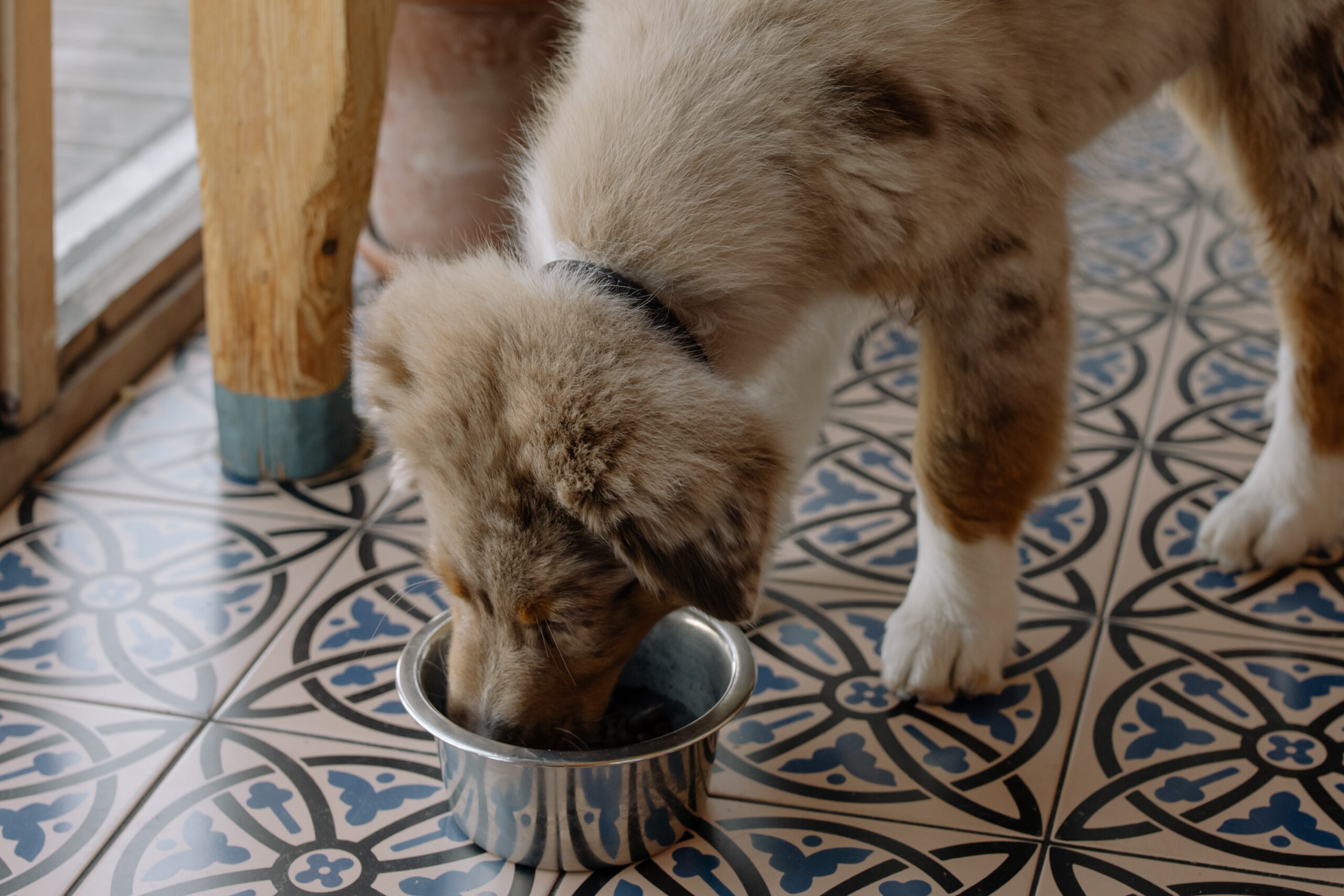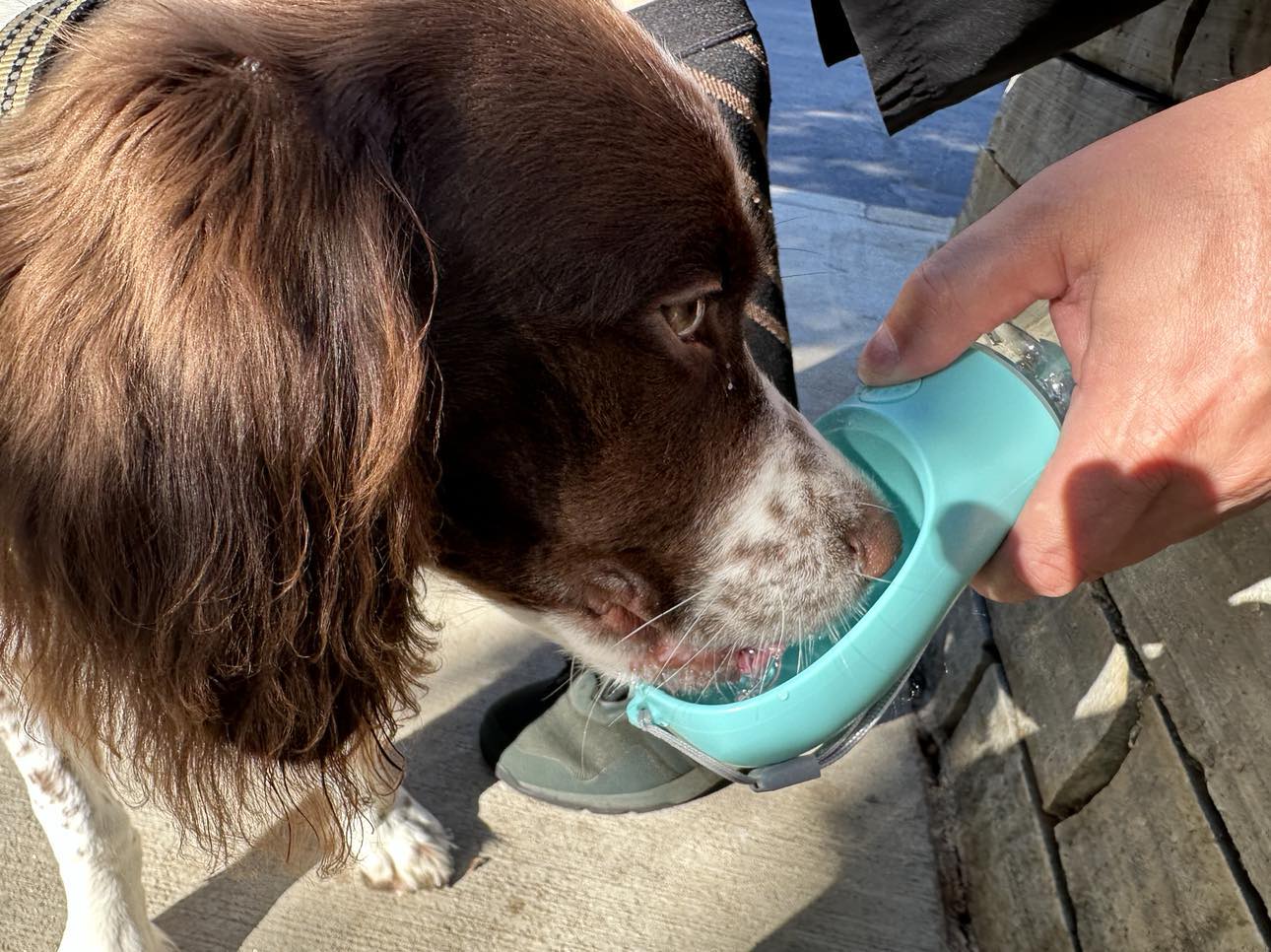Separation anxiety in dogs is a behavioral condition characterized by intense distress and anxiety when they are separated from their owners or left alone. It is a prevalent issue that affects a significant number of dogs worldwide. Dogs, being social animals, form strong bonds with their human companions, making it challenging for them to cope with extended periods of solitude.
The effects of separation anxiety on a dog’s well-being can be profound and far-reaching. When dogs experience separation anxiety, they may exhibit various behavioral changes, such as excessive barking, howling, destructive chewing, house soiling, or attempts to escape. These behaviors not only cause stress to the dog but can also lead to damage to property and strained relationships with neighbors or landlords.
Moreover, separation anxiety can take a toll on a dog’s emotional and physical health. The constant stress and anxiety experienced during alone time can result in decreased appetite, weight loss, excessive panting, and even self-harm behaviors like excessive licking or chewing on their own paws.
Dealing with separation anxiety is crucial for the well-being and quality of life of our furry companions. Addressing separation anxiety can lead to a calmer and more contented dog that is better equipped to handle time alone. By implementing effective coping strategies and creating a supportive environment, dog owners can help their beloved pets feel more secure and confident, reducing anxiety levels and improving overall happiness.
Recognizing Separation Anxiety in Dogs
Common Signs and Symptoms of Separation Anxiety in Dogs
Recognizing the signs of separation anxiety is essential for identifying if a dog is experiencing distress when left alone. Common signs and symptoms may include:
- Excessive Vocalization: Dogs with separation anxiety may bark, howl, or whine excessively when left alone.
- Destructive Behavior: Chewing, digging, or scratching at doors and windows can be signs of anxiety and an attempt to escape or seek attention.
- House Soiling: Dogs with separation anxiety may urinate or defecate indoors, even if they are house-trained.
- Pacing or Restlessness: Restlessness and repetitive behaviors, such as pacing, can indicate anxiety and stress.
- Escape Attempts: Dogs may try to escape from confined spaces, such as crates or rooms, in an effort to reunite with their owners.
- Excessive Salivation: Increased drooling or salivation is a common sign of stress and anxiety in dogs.
- Lack of Appetite: Dogs experiencing separation anxiety may lose interest in food during periods of separation.
The Difference Between Mild Distress and Severe Separation Anxiety
It’s important to differentiate between mild distress and severe separation anxiety. Mild distress may be seen as a temporary reaction to a change in routine or a new environment. For instance, some dogs may display mild distress when they are left alone for the first time in a new home.
On the other hand, severe separation anxiety is a more serious condition characterized by extreme and persistent anxiety that significantly impacts a dog’s well-being. Dogs with severe separation anxiety may exhibit more intense and prolonged symptoms, and their distress is not easily alleviated with time or environmental adjustments.
Observe Your Pet’s Behavior and Seek Professional Guidance if Needed
Dog owners are urged to observe their pet’s behavior when they are left alone to identify any signs of separation anxiety. Documenting the frequency and intensity of anxiety-related behaviors can be helpful in determining the severity of the condition.
If a dog exhibits signs of severe separation anxiety or if the distress is causing significant disruptions to their well-being and daily life, seeking professional guidance from a veterinarian or a certified animal behaviorist is crucial. These experts can provide personalized strategies and training techniques to address the specific needs of the dog and help them overcome separation anxiety in a positive and effective manner.
By being attentive to our canine companions and understanding their emotional needs, we can take the first step in providing the support and care they need to cope with separation anxiety and lead happier, more balanced lives.
Triggers and Root Causes of Separation Anxiety in Dogs
Potential Triggers of Separation Anxiety
Separation anxiety in dogs can be triggered by various factors, and understanding these triggers is essential for addressing the root cause of the anxiety. Some common triggers may include:
- Changes in Routine: Dogs are creatures of habit, and sudden changes in their daily routine, such as a new work schedule or moving to a new home, can cause stress and anxiety.
- Past Negative Experiences: Dogs with a history of traumatic events, such as abandonment or being rehomed multiple times, may be more prone to developing separation anxiety.
- Lack of Socialization: Dogs that haven’t been adequately socialized or have limited exposure to being alone may find it challenging to cope with solitude.
- Over-Attachment: Dogs that form an intense and overly dependent bond with their owners may struggle when separated from them.
- Previous Negative Associations: If a dog associates certain cues, such as picking up keys or putting on shoes, with being left alone, these triggers can heighten their anxiety.
Identifying the Root Causes to Tailor the Coping Strategies Effectively
Each dog is unique, and their anxiety may be influenced by specific triggers or underlying causes. Identifying the root causes of separation anxiety is crucial for implementing tailored coping strategies. By understanding the factors that contribute to their anxiety, dog owners can develop a comprehensive plan to address the specific needs of their canine companion.
For example, if a dog’s anxiety is triggered by changes in routine, gradually acclimating them to new schedules and introducing alone time in a positive manner can help alleviate their distress. On the other hand, a dog with past negative experiences may benefit from counterconditioning and building positive associations with being alone.
Tailoring coping strategies also involves providing a supportive environment that promotes independence and confidence. Creating a calm and enriching space for the dog, with comforting items like their favorite toys or bedding, can help ease anxiety during alone time.
By identifying triggers and root causes, dog owners can take proactive steps to prevent and manage separation anxiety effectively. Seeking professional guidance from a veterinarian or animal behaviorist can also be valuable in creating a personalized plan to address the specific needs of the dog and promote a more relaxed and contented canine companion.
Preparing for Departures
Tips for Creating a Calm Environment Before Leaving the Dog Alone
Preparing for departures in a calm and reassuring manner can significantly impact a dog’s anxiety levels. Here are some tips to create a relaxed environment before leaving the dog alone:
- Gradual Departures: Avoid sudden exits, as they may trigger anxiety. Instead, gradually acclimate the dog to short periods of alone time, gradually increasing the duration as they become more comfortable.
- Avoid Excessive Farewells: Keep departures low-key and refrain from prolonged goodbyes. Dogs can pick up on our emotions, and overly emotional goodbyes may signal that something is wrong, leading to increased stress.
- Provide a Safe Space: Create a safe and comfortable space for the dog to retreat to while you’re away. This can be a designated area with their bed, toys, and familiar scents, where they feel secure.
- Calming Aids: Consider using calming aids, such as pheromone diffusers or calming music, to help soothe the dog’s nerves during alone time.
- Exercise and Mental Stimulation: Engage in a play or exercise session before leaving. A tired and mentally stimulated dog is more likely to relax and rest during your absence.
Benefits of Establishing a Departure Routine to Reduce Anxiety
Establishing a departure routine can be beneficial in reducing separation anxiety. Routines provide predictability, which can help dogs feel more secure. Here are some advantages of having a departure routine:
- Predictability: Dogs thrive on routines, and knowing what to expect can alleviate anxiety. Consistent departure routines can help the dog anticipate your absence and adjust accordingly.
- Positive Associations: By incorporating positive experiences into the departure routine, such as offering a special treat or toy, you can create positive associations with your absence, making it less distressing for the dog.
- Reducing Stress: When a dog knows what to expect before your departure, they are less likely to experience the stress of the unknown.
- Consistency: A departure routine reinforces that you will return, promoting the dog’s confidence and reducing anxiety.
An example of a departure routine could involve providing a special treat or puzzle toy just before leaving, followed by a brief play session or a short walk to release excess energy. By making departures part of a regular, positive routine, dogs can become more comfortable and confident during alone time.
Remember that overcoming separation anxiety takes time and patience. Gradual desensitization, positive reinforcement, and creating a supportive environment can all contribute to helping your furry friend become a calmer and more self-assured canine companion. If the dog’s anxiety persists or worsens, consulting with a veterinarian or a professional animal behaviorist can provide additional guidance and support.
Gradual Desensitization Techniques
Desensitization is a behavioral technique used to reduce a dog’s anxiety by gradually exposing them to the triggers that cause distress in a controlled and positive manner. For separation anxiety, desensitization involves slowly increasing the time apart from the dog to help them become more comfortable with being alone.
This technique is effective because it allows the dog to build confidence and learn that being alone is not a threatening experience. Over time, the dog’s anxiety can decrease as they develop a more positive association with alone time.
- Start with Short Departures: Begin by leaving the dog alone for just a few minutes while you stay close by. Gradually increase the time in small increments, focusing on ensuring that the dog remains calm and relaxed during each departure.
- Use Positive Reinforcement: Before leaving, offer the dog a special treat or engage in a short play session. This positive association can help them associate your departures with something enjoyable.
- Stay Calm: During departures and returns, remain calm and avoid making a big fuss. Keep interactions low-key to avoid reinforcing the dog’s anxiety.
- Extend Alone Time Gradually: As the dog becomes more comfortable with short departures, gradually extend the time you are away. Continue to increase the duration at a pace that the dog can handle without becoming distressed.
- Randomize Departures: Vary the time you spend away from the dog to prevent them from anticipating your return. This can help them learn that your absence is not always permanent.
Patience is key when desensitizing a dog to separation anxiety. Rushing the process can lead to setbacks and increased anxiety. Each dog is unique, and the time it takes to see progress may vary. It’s essential to move at the dog’s pace, recognizing and celebrating even small achievements.
If the dog shows signs of distress during the desensitization process, take a step back and decrease the time spent apart before gradually progressing again. It’s vital to maintain a positive and supportive environment to help the dog build confidence and overcome their anxiety.
By implementing gradual desensitization techniques, dog owners can help their furry companions develop coping skills and build resilience to manage separation anxiety more effectively. With time, patience, and consistent practice, dogs can become more confident and content when left alone, resulting in a happier and healthier canine companion.
Counterconditioning and Positive Reinforcement
Counterconditioning is a powerful behavior modification technique used to change a dog’s emotional response to a specific trigger or situation. In the case of separation anxiety, counterconditioning aims to replace the dog’s negative feelings and anxiety associated with departures with more positive emotions.
To begin counterconditioning, focus on creating a positive environment before, during, and after departures. This involves providing the dog with enjoyable experiences and rewards to help them associate your absence with something pleasant. Here are some steps to implement counterconditioning:
- Identify Triggers: Observe and identify the cues that signal your departure, such as picking up keys or putting on shoes.
- Create Positive Associations: Before triggering the anxiety cues, engage the dog in fun activities or offer their favorite treats. This creates a positive emotional response before the departure cues are introduced.
- Gradual Exposure: Slowly introduce the departure cues while continuing to provide positive experiences. For example, pick up your keys, but instead of leaving, engage in play or give the dog a treat.
- Short Departures: Gradually increase the time you spend away while ensuring that the dog remains relaxed and comfortable.
Positive reinforcement plays a pivotal role in encouraging desirable behaviors and creating positive associations for dogs. By rewarding good behavior during alone time, you can reinforce the idea that being alone is a positive and rewarding experience. Here’s how positive reinforcement can be used:
- Treats and Rewards: Before leaving, offer the dog a special treat or a favorite toy. This can make the dog associate your departure with something enjoyable and rewarding.
- Calm Behavior: When the dog exhibits calm and relaxed behavior during alone time, reward them with praise or affection. This reinforces the idea that calm behavior is desired and brings positive attention.
- Consistency: Be consistent in providing positive reinforcement during departures. This consistency helps the dog understand that staying calm and relaxed leads to rewards.
- Gradual Progression: As the dog becomes more comfortable with being alone, continue to use positive reinforcement to support their progress.
Positive reinforcement creates a positive feedback loop, helping dogs associate alone time with feelings of contentment and security. It can be a valuable tool in building the dog’s confidence and reducing anxiety related to separations.
By incorporating counterconditioning and positive reinforcement, dog owners can make departures a more positive and stress-free experience for their furry companions. It is essential to remain patient and consistent in implementing these techniques to help the dog develop healthier coping mechanisms and a more positive outlook on being alone. If needed, consult with a professional dog trainer or animal behaviorist to receive personalized guidance and support in managing separation anxiety effectively.
Engaging Activities and Interactive Toys
Mentally stimulating activities can help keep a dog’s mind engaged and prevent boredom during alone time. Here are some engaging activities to consider:
- Food Puzzle Toys: Fill food puzzle toys with treats or kibble to encourage the dog to work for their food. These toys provide mental stimulation and keep them occupied while you’re away.
- Nose Work Games: Engage the dog’s sense of smell by hiding treats or toys around the house for them to find. This activity taps into their natural instincts and provides mental exercise.
- Interactive Training Sessions: Use your dog’s alone time to work on training exercises. Teach them new commands or practice known ones to keep their mind focused and attentive.
- Frozen Treats: Create frozen treats using dog-friendly ingredients, like peanut butter or yogurt, to offer a refreshing and mentally stimulating reward.
Interactive toys and puzzle games can be effective tools in combating separation anxiety. These toys offer mental engagement, divert the dog’s attention, and provide a sense of accomplishment when they successfully complete the task. Here are some recommended interactive toys:
- Treat-Dispensing Toys: These toys release treats when the dog interacts with them, encouraging play and exploration.
- Kong Toys: Kong toys are durable rubber toys that can be filled with treats or peanut butter. They provide long-lasting mental stimulation as the dog tries to extract the treats.
- Puzzle Feeders: Puzzle feeders challenge the dog to solve problems and work for their food, stimulating their cognitive abilities.
- Interactive Plush Toys: Some plush toys come with hidden squeakers or crinkle materials that keep the dog entertained and engaged.
When selecting interactive toys and puzzle games, consider your dog’s preferences and play style. Toys that are easy to clean and safe for unsupervised play are ideal for alone time.
By incorporating mentally stimulating activities and interactive toys into your dog’s routine, you can provide a productive and engaging experience during their alone time. These activities not only prevent boredom but also promote mental well-being and reduce separation anxiety. As part of an overall approach to managing separation anxiety, combining engaging activities, positive reinforcement, and other coping strategies can help your dog become a calmer and more content companion when you’re away.
Calming Aids and Pheromone Therapy
Calming aids can be valuable tools in reducing anxiety and creating a more relaxing environment for your dog. Here are some calming aids to consider:
- Calming Music: Playing soothing music or sounds specifically designed for dogs can have a calming effect on their nervous system. The gentle melodies can mask external noises and create a peaceful atmosphere.
- Aromatherapy: Certain scents, such as lavender or chamomile, are known for their calming properties in both humans and dogs. Using pet-safe essential oils or diffusers can help create a calming ambiance at home.
- Thundershirt or Anxiety Wrap: These specially designed garments apply gentle, constant pressure to your dog’s body, which can help reduce anxiety and promote relaxation.
- Calming Supplements: Some dogs may benefit from natural calming supplements containing ingredients like chamomile, valerian root, or melatonin. Always consult with your veterinarian before giving your dog any supplements.
Pheromone therapy, specifically using products like Adaptil, can be an effective way to alleviate anxiety in dogs. Adaptil utilizes synthetic dog-appeasing pheromones, which mimic the natural pheromones released by mother dogs to comfort their puppies. These pheromones have a calming effect on dogs of all ages and can help reduce anxiety during stressful situations, including separations.
Adaptil is available in various forms, such as diffusers, sprays, and collars, allowing dog owners to choose the most suitable option for their pet. The diffusers release the calming pheromones into the air, creating a reassuring environment, while the sprays and collars provide portable anxiety relief.
By using calming aids and pheromone therapy, you can create a soothing atmosphere that supports your dog’s emotional well-being during times of separation. It’s essential to combine these aids with other behavioral training and coping strategies to address separation anxiety comprehensively. As always, consult with a veterinarian or animal behaviorist to determine the most appropriate calming aids for your individual dog’s needs.
By employing a holistic approach that includes behavioral training, positive reinforcement, interactive activities, and calming aids, you can significantly improve your dog’s ability to cope with separation anxiety and lead a calmer, happier life.
Professional Training and Behavioral Therapy
When dealing with separation anxiety, seeking professional training and guidance from certified animal behaviorists can be instrumental in addressing the root causes of the anxiety and implementing effective coping strategies. Certified trainers and behaviorists have the expertise to assess your dog’s specific situation and provide personalized training plans tailored to their individual needs.
Professional training can help dog owners understand their pet’s behaviors better, recognize triggers of anxiety, and develop appropriate responses. Through positive reinforcement-based training techniques, behaviorists can teach dogs alternative coping mechanisms, gradually reducing anxiety and promoting calmer behavior during alone time.
In severe cases of separation anxiety, where the dog’s distress significantly impacts their well-being and quality of life, behavioral therapy may be recommended. Behavioral therapy involves working with a certified animal behaviorist to implement specialized techniques to address the specific anxiety triggers and responses.
Behavioral therapy may include systematic desensitization, counterconditioning, and other behavior modification approaches to gradually reduce the dog’s anxiety during departures. The therapy sessions aim to teach the dog coping skills and establish a more positive emotional response to being alone.
In some cases, medication prescribed by a veterinarian may complement behavioral therapy to provide additional support for dogs with severe separation anxiety. Medication can help reduce the dog’s overall anxiety levels, making it easier to implement behavior modification techniques effectively.
It’s essential to recognize that separation anxiety is a complex issue, and each dog may respond differently to various treatments. Professional behaviorists are skilled in developing individualized plans based on your dog’s specific needs, temperament, and anxiety levels.
By seeking professional guidance and considering behavioral therapy when necessary, dog owners can provide their canine companions with the best chances of overcoming severe separation anxiety and achieving a more balanced and contented life.
Implementing a Supportive Environment
Creating a safe and supportive environment is crucial in helping dogs cope with separation anxiety. A supportive environment fosters a sense of security and comfort for your canine companion, which can help reduce their anxiety levels during periods of alone time. Here are some key factors to consider:
- Safe Spaces: Designate a cozy and quiet area in your home where your dog can retreat when feeling stressed or anxious. Provide comfortable bedding and familiar items, such as their favorite toys, to create a soothing space.
- Minimize Triggers: Identify and minimize potential triggers of anxiety, such as loud noises, chaotic environments, or changes in routine. Reducing these stressors can create a calmer atmosphere for your dog.
- Consistency: Stick to a consistent daily routine for feeding, playtime, walks, and rest periods. Predictable routines can help your dog feel more secure and confident, reducing anxiety caused by uncertainty.
- Avoid Punishment: Avoid scolding or punishing your dog for anxious behaviors related to separation. Instead, focus on positive reinforcement and reward calm behaviors to encourage a sense of security.
Routine: A structured daily routine can significantly benefit dogs with separation anxiety. Consistency in meal times, playtime, walks, and alone time can help your dog anticipate what to expect, reducing stress and anxiety associated with changes in their environment.
Exercise: Regular exercise is essential for promoting physical and mental well-being in dogs. Physical activity helps release pent-up energy and anxiety, leading to a calmer demeanor. Engaging your dog in daily walks, play sessions, or interactive games can contribute to a more relaxed state.
Socialization: Proper socialization can boost your dog’s confidence and reduce anxiety around new environments and people. Gradually expose your dog to various situations, other dogs, and people in a positive and controlled manner. This positive social exposure can help your dog build trust and adapt better to different situations, including periods of separation.
Using a combination of these strategies, alongside other coping techniques discussed earlier, can create a well-rounded and supportive environment for your dog. By addressing their separation anxiety with care, patience, and understanding, you can help your canine companion feel more secure, relaxed, and content during times of being apart from you.
Medication and Pet Insurance Considerations
In severe cases of separation anxiety, where behavioral interventions alone may not be sufficient, medication can be considered as an additional support. Medication is typically prescribed by a veterinarian and should only be used as a last resort after other behavior modification strategies have been implemented without significant improvement.
Medication for separation anxiety is not meant to “cure” the condition but rather to help reduce the dog’s overall anxiety levels, making it easier for them to respond to behavior modification techniques effectively. The most commonly prescribed medications for separation anxiety in dogs are anti-anxiety medications, such as selective serotonin reuptake inhibitors (SSRIs) or tricyclic antidepressants. These medications can help regulate the dog’s brain chemistry and reduce anxiety-related behaviors.
It’s essential to work closely with a veterinarian when considering medication for your dog’s separation anxiety. The vet will conduct a thorough evaluation of your dog’s health and behavior and determine if medication is appropriate. Additionally, they will establish the right dosage and monitor your dog’s progress regularly.
Pet insurance can be a valuable asset when addressing separation anxiety in dogs, especially if behavioral consultations and treatments are needed. While not all pet insurance plans cover behavioral issues, some comprehensive policies include coverage for behavioral consultations, treatments, and medication for diagnosed conditions like separation anxiety.
Having pet insurance can help offset the costs associated with working with certified animal behaviorists, which can be beneficial when seeking professional guidance to address separation anxiety effectively. Additionally, if medication is deemed necessary in severe cases, pet insurance may cover a portion of the prescription costs, making it more accessible for dog owners.
When choosing pet insurance, it’s essential to review the policy carefully to understand the coverage options, limits, and exclusions. Look for plans that include behavioral coverage, as well as those that offer flexible coverage for different types of treatments and consultations.
In conclusion, while behavioral interventions and positive reinforcement techniques are the primary focus in managing separation anxiety, medication can play a role in severe cases. Pet owners should approach medication as a last resort and work closely with their veterinarian to determine the most appropriate approach for their dog’s needs. Furthermore, having pet insurance can provide financial support for behavioral consultations and treatments, making it a valuable consideration for dog owners dealing with separation anxiety in their furry companions. By combining effective strategies, professional guidance, and potential insurance coverage, you can provide your dog with the best chances of overcoming separation anxiety and leading a happier, healthier, and more balanced life.
Conclusion
Addressing separation anxiety in dogs requires a comprehensive and compassionate approach. Recap the key strategies discussed throughout the article:
- Recognizing Signs: Learn to recognize the signs of separation anxiety, including destructive behaviors, excessive barking, and house soiling.
- Identifying Triggers: Identify the triggers that cause anxiety in your dog and work on minimizing or desensitizing them.
- Preparing for Departures: Create a calm environment before leaving the dog alone and establish a departure routine to reduce stress.
- Gradual Desensitization: Gradually increase the time apart from your dog to help them adjust to being alone.
- Counterconditioning: Use positive reinforcement and create positive associations with alone time.
- Engaging Activities: Offer mentally stimulating activities and interactive toys to keep your dog occupied during alone time.
- Calming Aids: Utilize calming aids like music or aromatherapy to soothe anxiety.
- Professional Help: Consider seeking professional training or behavioral therapy for severe cases.
- Supportive Environment: Create a safe and supportive environment that promotes a sense of security.
Coping with separation anxiety is a journey that requires patience, understanding, and consistent training. Each dog is unique, and there is no one-size-fits-all solution. Be patient with your furry companion as they navigate through their anxieties, and understand that progress may take time.
Consistency is key in implementing behavioral strategies and establishing routines. Stick to your training plan and be persistent in your efforts. With dedication and commitment, your dog can become calmer and more resilient when left alone.
Remember that building a strong bond with your dog and providing a supportive environment are crucial in helping them feel secure and confident. Show them love, understanding, and positive reinforcement during their progress.
In conclusion, coping with separation anxiety in dogs is a process that requires time, effort, and empathy. By combining various coping strategies, seeking professional guidance when needed, and fostering a supportive environment, you can help your canine companion overcome their anxiety and lead a happier, more balanced life. With your unwavering commitment, you can strengthen the bond between you and your dog, ensuring that they feel loved, safe, and at ease during periods of alone time.










